AB 212 ( Bell UH 1 N)
English Translation
Merci à Modellismo piu pour ces photos
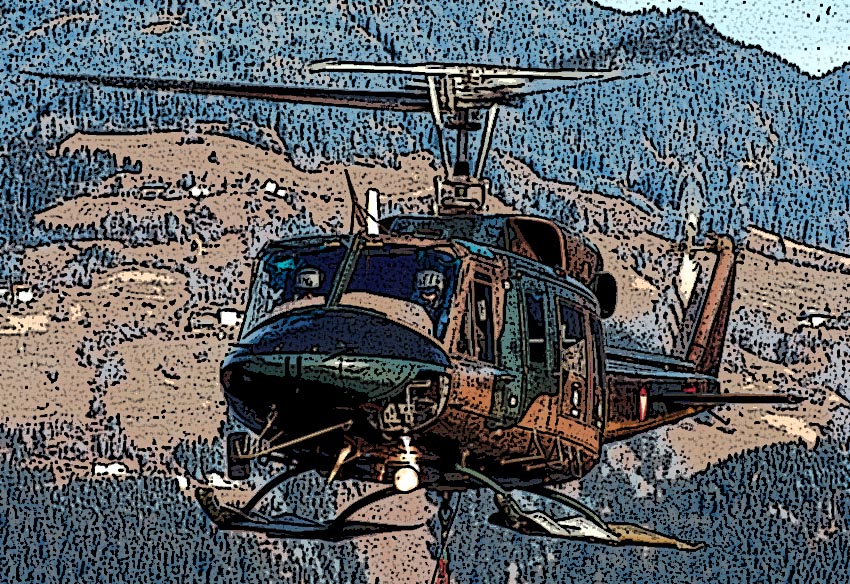 |
L'hélicoptère Bell UH-1N Twin Huey également connu comme le Twin Two-Twelve (version civile)est un hélicoptère militaire moyen qui vole en avril 1969. Il s'agit d'un helicopter bipale et bimoteur
Piloté par un homme il peut emporter quatorze passagers . Il a une capacité interne de 6,23 m³ et 2,268 kg
C’est un hélicoptère utilitaire, principalement utilisé pour la recherche et de sauvetage, le commandement et le contrôle des opérations maritimes et les missions spéciales
Cet HH-1N basé à terre a été utilisé par l'US Navy pour les opérations de recherche et de sauvetage par l'USMC par tous temps, de jour ou de nuit, ainsi que comme poste aérien de commandement de contrôle et de coordination des opérations d'assaut et de soutien. En outre, il est utilisé pour le transport maritime, les opérations spéciales, le contrôle aérien avancé, l’évacuation sanitaire des blessés sur le terrain et la récupération tactique des aéronefs et diverses autres missions l.
Les opérateurs civils utilisent également cet hélicoptère (soutien des services ambulance aérienne sur les plates-formes pétrolières en mer et le sauvetage maritime )
Cet hélicoptère a été construit d'abord pour les forces canadiennes comme CUH-1N (plus tard CH-135) à la fin des années 60
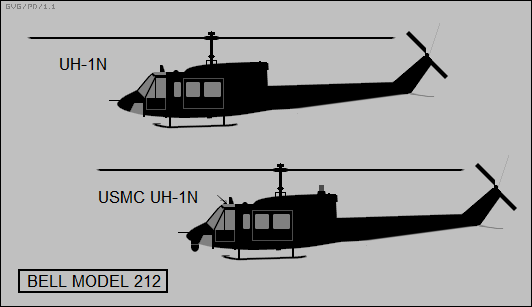 |
.gif) |
| Internet |
Il était basé sur le fuselage du Bell 205
Auparavant en 1965, Bell avait expérimenté sur fonds propres le Modèle 208 "Twin Delta qui était un prototype Huey, UH-1D équipé d'un XT67 Continental-T-1
La motorisation était composée de deux T72-T - 2 turbomoteurs ayant une boite commune
Aussi en 1968 lorsque les forces canadiennes demandent un nouvel hélicoptère Celui-ci est tout prêt Le programme commence financé par Bell et le gouvernement Canadien
En mai 197 a lieu la première livraison à l'armée canadienne
Cette livraison intervient après les premières livraisons de l'UH-1N à l'US Air Force en 1970, qui reçoit 141 hélicoptères (79 pour l’USAF, 40 pour l’ US Navy et 22 pour l’ US Marine Corps). L’ US Navy et l(US Marine Corps ont été particulièrement intéressés par le type, et ont obtenu un total de 221 hélicoptères en 1978.
Les UH-1N de l’US Navy seront progressivement équipés de contre-mesures, tourelles à l’avant des capteurs images infrarouge, et autres kits.
Deux UH1N standard de l’ US Navy ont été convertis en «VH-1N" VIP transports, et six modèles 212 modèle furent construits sur cette normes pour USMC
L'USAF a adopté l'UH-1N pour le rôle de sauvetage dévolu au "HH-1N", avec environ 52 machines équipées à l’identique
Au US A 294 Bell UH-1N (Bell 212) furent construits Le HH1N a eu comme successeur le UH-1Y Venom appelé parfois Super Huey
Description
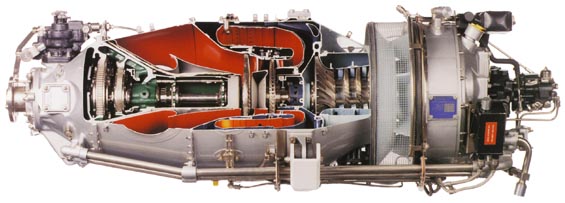 |
| |
Les bimoteurs, par rapport au monomoteur sont plus fiables notamment pour les vols au dessus de la mer,
L’UH-1N a un rotor principal actionné par 2 PW Canada PT 6T -3 T400 Turbo Twin Pac couplés avec une boîte commune. Ce moteur permet UH1M (AB 212) d’avoir une bonne vitesse de croisière même avec une charge importante
Les pales du rotor en métal semi-rigides sont interchangeable . le tout est contrôlé hydrauliquement Il possède un gyroscope stabilisé Les versions peuvent aussi etre équipées avec des appareils IR .
Le train d’atterrissage est tubulaire et il peut recevoir des flotteurs pour un amerrissage ainsi que des roues.
Versions
UH-1N Iroquois utilisé par l'US Air Force, US Navy, et USMC.
VH-1N VIP configuration de transport
HH-1N Version SAR.
Twin Two-Twelve - Version civile l. Il peut transporter jusqu'à 14 passagers. Cette version a été déployé en même temps . les équipement de cabine sont différents
Il fut en 1977 le premier helicopter certifié pour un vol IFR et aussi pour un amerrissage avec flotteurs
Agusta-Bell AB 212
 |
Versions civiles ou militaires version Construit sous licence
Agusta-Bell AB 121 EW version de guerre électronique pour la Turquie
Agusta-Bell AB 212ASW Italie Grèce Iran, Pérou, Espagne, Turquie et Venezuela
Il a un radôme au dessous du cockpit et à gauche un sonar ASQ Bendix-18
Il atteint un poids de 5080 kg et il reçoit une protection contre la corrosion.
Il était armé de deux Torpilles Mk 44 et Mk 46 deux grenades anti-sous-marines dans le rôle ASW et quatre missiles AS guidés pour une mission 'antinavire
CH-135 Twin Huey version canadienne transféré plus tard à la Colombie après leur achat par le gouvernement américain en 1999 pour l'utilisation par la police nationale colombienne et Dirección Antinarcóticos (DIRAN).
Données techniques
Poids à vide kg 2,721.5
Poids en charge 4,762.7 kg
Équipage 4 personnes (pilote, copilote, chef d'équipage, tireur) + 6-8 soldats équipés, ou l'équivalent de fret
Longueur 12,69 m
Rotor diameter14.6 m
Hauteur 4,4 m
Motorisation: 2 × P O T 400 CP 400
Vitesse Max / croisière 220 kmh / 207,3 kmh
Gamme de 460 km
Plafond 5273 m
Armement
2.75-inch paniers à roquettes,
GAU-16 de calibre .50. Mitrailleuse,
GAU-17 Minigun de 7,62 mm ou mitrailleuse M240 7,62 mm
Utilisateurs Users
.jpg) |
.jpg) |
.jpg) |
.jpg) |
.jpg) |
| Angola |
Afghanistan |
Australie |
Bangladesh |
Bolivie |
.jpg) |
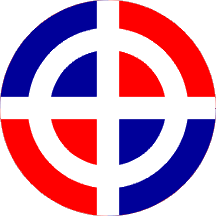 |
.jpg) |
.gif) |
.jpg) |
| Brunei |
RépubliqueDominicaine |
Equateur |
El Salvador |
RFA |
 |
.jpg) |
.jpg) |
 |
.jpg) |
| Ghana |
Grece |
Guatemala |
Guyana |
Indonesie |
.jpg) |
.jpg) |
.jpg) |
.gif) |
.png) |
| Iran |
Irak |
Israël |
Italie |
Jamaïque |
.jpg) |
.jpg) |
.jpg) |
.jpg) |
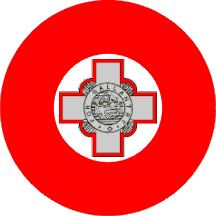 |
| Japon |
Jordanie |
Liban |
Lybie |
Malte |
.jpg) |
.png) |
.png) |
.jpg) |
.gif) |
| Mexique |
Maroc |
Panama |
Perou |
Philippines |
.png) |
.gif) |
.jpg) |
.png) |
.jpg) |
| Arabie |
Serbie |
Singapour |
Somalie |
Corée du Sud |
.jpg) |
.jpg) |
.jpg) |
.jpg) |
.png) |
| Espagne |
Sri Lanka |
Soudan |
Thailande |
Tunisie |
.jpg) |
.jpg) |
.jpg) |
.png) |
.jpg) |
| Turquie |
Ouganda |
EAU |
UK |
USA |
.jpg) |
.jpg) |
.jpg) |
.jpg) |
.jpg) |
| Uruguay |
Vénézuéla |
Yemen |
Zambie |
Autriche |
Autres Photoscopes (Others WAlk Around) 1 2 3
AB 212 (Bell UH 1 N)
 |
The Bell UH-1N Twin Huey also known as the Twin Two-Twelve is a medium military helicopter who fly in April, 1969. It is a two-bladed, twin-engined
it is piloted by one pilot who carried fourteen passengers . The internal capacity of 6.23 m³ and 2,268 kg of capacity He was and utility helicopter, primarily used for search and rescue, command and control and maritime special operations missions
This HH-1N was used by US Navy for shore-based search and rescue duties and by USMC to provide all-weather, day-or-night airborne command, control and coordination for assault support operations. Additionally, it is used for assault transport and maritime special operations, forward air control, aeromedical evacuation of casualties from the field and tactical recovery of aircraft and personnel missions.
Civilian operators use also this helicopter for commercial applications. (support of offshore oil rigs air ambulance maritime rescue
This helicopter was built first for Canadian forces as CUH-1N (later CH-135) in the late 60’s
 |
.gif) |
| |
He was based on the Bell 205 fuselage
So before in 1965, Bell had experimented using company funds a single twin-engine Model 208 "Twin Delta" Huey prototype, which was a UH-1D fitted with a Continental XT67-T-1 engine module, consisting of two T72-T-2 turboshaft engined driving a common gearbox.
And in 1968 when Canadian forces ask for a new helicopter all is ready This programme was initiated as a joint venture, financed by Bell, the Canadian government and PWAC.
In may 1971 took place the first delivery to i Canadian army This delevries came after the first deliveries of the UH-1N to the US Air Force in 1970, which obtained 141 (79 for the USAF, 40 for the US Navy and 22 for the US Marine Corps).
US Navy and Marine Corps were particularly interested in the type, and obtained a total of 221 by 1978.
Marine UH-1Ns would gradually be fitted with countermeasures, infrared imager nose turrets, and other kit. Two standard Marine UH-1Ns were converted to "VH-1N" VIP transports, and six Model 212s were built new to this standard for the Corps as well. The USAF adopted the UH-1N for the crash rescue role as the "HH-1N", with about 52 machines fitted out much like the HH-1H. by US A 294 Bell under the designation UH-1N (Bell 212) For USA the HH1N was follow by the UH-1Y Venom also called Super Huey
Description
 |
| |
The twin-engine onfiguration provided greater flight safety for overwater operations,
UH-1N's main rotor is powered/ made up of twoPW Canada PT 6T -3 T400 Turbo Twin Pac coupled and the power turbines driving a common gearbox .This powerplant allow engine at the 212 to maintain cruise performance at maximum weight
He has an All-metal two-blade semi-rigid teetering main rotor with interchangeable blades; underslung feathering axis head; rotor brake optional.
Fully powered hydraulic controls; gyroscopic stabiliser bar above main rotor; automatic variable incidence tailplane; IFR versions have large fin above cabin to improve roll-yaw responses during manual instrument flying.
Metal main rotor blades have extruded aluminium nose sections and laminates; glass fibre safety straps provide redundant load path; fuselage conventional light metal.
His landing gear was a Tubular skid type. Lock-on ground handling wheels, high skid gear, fixed floats and emergency pop-out nylon float bags optional.
Versions
UH-1N Iroquois used by the USAF, USN, and USMC.
VH-1N VIP transport configuration
HH-1N SAR variant.
Twin Two-Twelve - Civil utility transport version. It can carry up to 14-passenger. A 14-passenger commercial version known as the Twin Two-Twelve was developed more or less simultaneously, this differing from the military model primarily in its cabin furnishing and avionics equipment. The Twin Two-Twelve gained FAA Transport Type Category A certification on 30 June 1971, and the type has since gained certification for IFR operation, requiring a new avionics package, new instrument panel, and stabilisation controls for such use. In June 1977 it became the first helicopter to be certificated by the FAA for single-pilot IFR operation with fixed floats.
Agusta-Bell AB 212
 |
Civil or military utility transport version. Built under license
Agusta-Bell AB 121EW Electronic warfare version for Tutkey
Agusta-Bell AB 212ASW Italy Greece Iran Peru, Spain, Turkey, and Venezuela
He has a prominent radome above the cockpit and on the left a Bendix ASQ-18 sonar
He has a gross weight of 5080 kg and corrosion protection.
He was armed with two Mk 44 or Mk 46 torpedoes or two depth charges in the ASW role and four AS.12 air-to-surface wire-guided missiles for the anti-shipping role.
CH-135 Twin Huey Canadian version later transferred to Columbia after purchase by US government in 1999 for use by Colombian National Police and Dirección Antinarcóticos (DIRAN).
Technical data
Empty weight 2,721.5 kg
Loaded weight 4,762.7 kg
Crew 4 (Pilot, copilot, crew chief, gunner) + 6-8 combat-equipped troops, or equivalent cargo
Length 12.69 m
Rotor diameter14.6 m
Height 4.4 m
Powerplant: 2× P W T 400 CP 400
Speed Max/cruise 220 km/h / 207.3 km/h
Range 460 km
Ceiling 5,273 m
Armament
2.75-inch rocket pods,
GAU-16 .50 Cal. Machinegun,
GAU-17 7.62mm minigun or M240 7.62mm lightweight machinegun
•






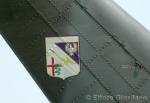
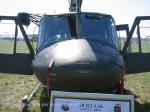
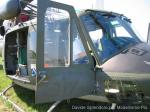
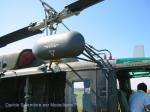
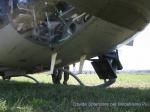


.gif)


.jpg)
.jpg)
.jpg)
.jpg)
.jpg)
.jpg)

.jpg)
.gif)
.jpg)

.jpg)
.jpg)

.jpg)
.jpg)
.jpg)
.jpg)
.gif)
.png)
.jpg)
.jpg)
.jpg)
.jpg)

.jpg)
.png)
.png)
.jpg)
.gif)
.png)
.gif)
.jpg)
.png)
.jpg)
.jpg)
.jpg)
.jpg)
.jpg)
.png)
.jpg)
.jpg)
.jpg)
.png)
.jpg)
.jpg)
.jpg)
.jpg)
.jpg)
.jpg)